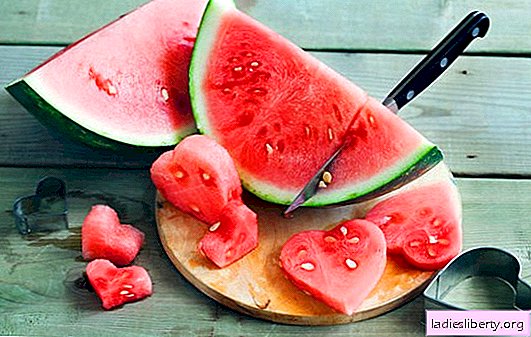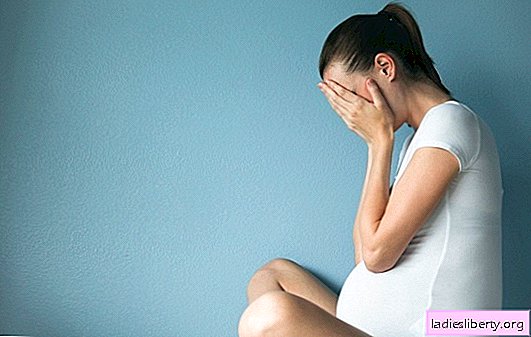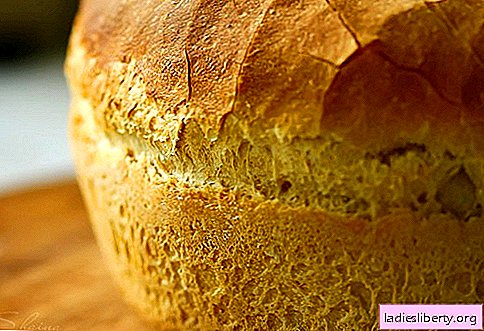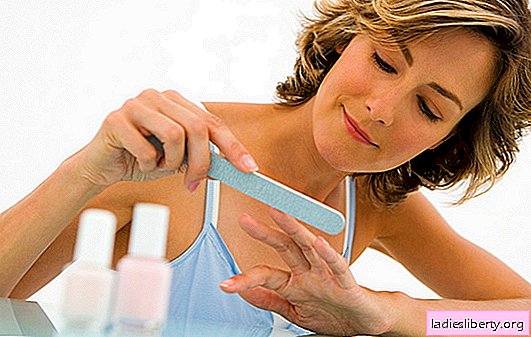
Human eyes perform an important function - they collect a lot of information from the environment.
Eye damage seriously affects quality of life. If you do not contact a specialist in time, this can lead to irreversible changes and serious complications.
Anatomical details
The lower and upper eyelids - structures that protect the eyes, consist of several layers of cells:
- epithelial;
- fat;
- muscle.
There are also “islands” of glandular tissue that secrete a special secret that protects the eyeball.
Acinic meibomian glands are located in the thickness of each eyelid: up to 40 on the upper eyelid, up to 30 on the lower eyelid, their outlet openings are located behind the base of the eyelashes. From the openings of the meibomian glands, a greasy eyelid is released.
The eyelids perform the following functions:
• take part in the outflow of tear fluid;
• protect the eye from foreign particles and dust;
• protect the eyeball from injury.
Eyelids hurt - causes
Eyelids often hurt due to irregularities in one or more structures, so the main reasons are:
• boil;
• barley;
• abscess;
• halazion;
• dacryocystitis;
• erysipelas;
• shingles;
• demodicosis;
• bacterial, fungal and viral infections;
• allergy;
• traumatic damage to the eye (in this case, the eyelid above the eye is swollen, sore and has a bluish tint);
The development of pathology of the eyelids is facilitated by certain factors:
• low immunity;
• chronic diseases (caries, sinusitis, tonsillitis);
• addiction to alcohol;
• anemia;
• hypovitaminosis;
• intoxication;
• dust;
• allergies to medicines, dust, smoke, cosmetics, cold, wind.
Often the occurrence of an inflammatory process, as a result of which the eyelids hurt, is combined with a violation of refraction (astigmatism, myopia, hyperopia).
Infectious eye diseases cause not only damage to health, but also are fraught with complications. Untreated infections lead to clouding of the cornea and loss of vision. The causative agent gets into the eyes through the hands, handkerchief, various objects, even if they seem perfectly clean, because the air, surrounding objects and all surfaces are teeming with bacteria, fungi and viruses.
Blepharitis - a consequence of infections
Blepharitis is an inflammation of the eyelids, the causes of which are varied:
• parasites;
• bacteria;
• viruses;
• chemical agents;
• allergens;
• autoimmune processes.
Mostly blepharitis affects the eyelids of both eyes. The disease is common: according to statistics, every third person at least once in his life has been exposed to these unpleasant sensations. Pathology develops regardless of age. Most prone to people from 40 to 70 years.
The inflammatory process with blepharitis affects the skin of the edge of the eyelids, to which the eyelashes are attached.
Depending on the localization, the following types of blepharitis are distinguished:
• front;
• rear;
• angular
In the first case, the inflammatory process affects only the edge of the eyelid.
With posterior blepharitis, the meibomian glands are involved.
With angular - corners of the eyes suffer.
Eyelids hurt with erysipelas
The causative agent of erysipelas - group A hemolytic streptococcus - penetrates through any violation of the integrity of the skin as a result of microtrauma. The disease begins acutely, appear:
• chills;
• hyperemia of the eyelid;
• his swelling;
• sharp pain in the eyelid.
In this case, the eyelids are very sore: depending on the localization of the process, the lower eyelid hurts (the most common option), but there are other cases when the upper eyelid is affected and hurts. From healthy skin, the affected part of the eyelid is separated by edema.
Tinea versicolor is a source of pain
Shingles caused by the herpes virus are characterized by an acute onset: the temperature rises, general weakness, weakness disturb.
Depending on the location of the infectious process, the upper eyelid or lower one hurts.
In addition to pain, hyperemia and edema of the skin, vesicle rashes that can spread to the forehead and temples appear.
Boil - eyelids hurt
Furuncle - acute purulent - necrotic inflammation caused by staphylococcus.
Both the upper and lower eyelids may be involved. Inflammation begins with the onset of a node. When it appears, the lower eyelid is very sore, because it is there that the boil most often occurs.
Around the site, edema develops, which can spread to half of the face.
In the future, a necrotic core is formed, pain in the eyelid intensifies and often spreads throughout the head.
Barley - life-threatening complications
Barley causes sharp pain in the upper and lower eyelids, which are affected equally often. Caused by staphylococcus, appears in people with reduced immunity as a result of hypothermia, vitamin deficiency, endocrine pathology.
The first sign of barley is edema of the century. At the same time, unpleasant sensations arise in the eye, and with light pressure the eyelids hurt. Later there is hyperemia, purulent discharge occurs. Accompanied by barley:
• a sharp increase in temperature;
• intense headaches;
• enlarged lymph nodes.
Barley can recur and give serious complications in the form of generalization of infection:
• phlegmon;
• abscess;
• meningitis;
• cerebral thrombosis.
With these symptoms, immediate medical attention is needed.
After a certain time, barley opens up on its own or disappears before reaching this stage.
Abscess - upper eyelid hurts
The upper eyelid often hurts due to the development of an abscess, for which this localization is typical. The disease begins with compaction and edema - these are the first signs of the disease.
In the future, hyperemia and prolapse of the affected eyelid develops.
The entire period until an abscess develops, the eyelid hurts, or rather, excruciating headaches.
Phlegmon - Meningitis Possible
Phlegmon of the eye socket and lacrimal sac is accompanied by:
• intoxication;
• edema;
• hyperemia of the skin of the eyelid;
• conjunctivitis;
• compaction in the inner corner of the eye or exophthalmos with limited movement of the eyeball;
• sharp pain when pressing on the eyelid;
• a feeling of oval compaction at the site of inflammation.
In addition to high temperature, diplopia (double vision) can occur.
With the rapid progression of the disease, urgent medical attention is necessary due to a serious prognosis not only for vision, but also for life, especially in children.
Due to the nature of the venous blood supply to the eyeball, infection can enter the skull with the development of meningitis.
Halazion - lower eyelid hurts
Halazion (hailstones) - proliferative (with proliferation of tissue) inflammation of the cartilage tissue around the meibomian gland. Typical localization is the lower eyelid.
The upper eyelid may be affected, but much less frequently. The skin above the formation is hyperemic, easily shifted. Often a secondary infection joins, and then suppuration occurs, followed by dissection and release of pus. Halazion is a long sluggish process that is complicated by granulomas or cysts.
For several weeks, the process proceeds unnoticed, does not cause any subjective sensations. In the future, as the halazion develops, the patient notes that the lower eyelid hurts. The pain is accompanied by a feeling of a foreign body in the eye.
Visual acuity may drop sharply. Over time, conjunctivitis and keratitis develops (inflammation of the conjunctiva and cornea of the eye). This is due to the development of halazion in the direction of the eyeball, as a result of which the mucous membrane is irritated.
Also, in many patients, fistulas form through which the contents of the granuloma fall to the surface. Edema occurs, later the lower eyelid is deformed, a persistent cosmetic defect develops.
Endophthalmos - loss of vision
Endophthalmos causes pain in the lower eyelid.
It is a serious and dangerous pathology in which inflammation develops in the vitreous body.
This happens after injuries and injuries, as well as operations on the eye or on the background of a corneal ulcer. The lower eyelid hurts due to irritation of multiple nerve endings.
The result may be loss of vision.
What to do if your eyelids hurt
When the eyelids hurt, the reasons can be different. Therefore, treatment in each individual case depends on the etiology and course of the disease that caused pain in the eyelids.
What to do if the eyelids hurt can only be decided by an ophthalmologist, who must be consulted without fail.
1. Furuncle, before it opens, it can be treated with dry heat in the form of UV and UHF (up to 5 sessions) and treated with camphor alcohol around. With edema of the eyelid, water-alcohol compresses can be used. Topically applied antibiotics in the form of drops in the eye.
Compresses are contraindicated, because they can contribute to the spread of the infectious process.
In severe cases, systemic antibiotics and vitamin therapy are used.
2. Halazion treated conservatively in the early stages. The following groups of drugs are used:
• antibiotics;
• anti-inflammatory;
• general strengthening;
• physiotherapeutic methods of treatment.
Long-running major chalazion after a course of antibiotics is subject to surgical treatment.
3. Endophthalmitis due to the severity of the disease is treated in a hospital. The treatment is conservative, long. With inefficiency, surgical methods are used.
Eyes are the most important organ, without which it’s hard to live. Any changes associated with the eyes require immediate contact with an ophthalmologist to avoid complications.
To preserve vision, you need to be careful about your condition and not self-medicate.











